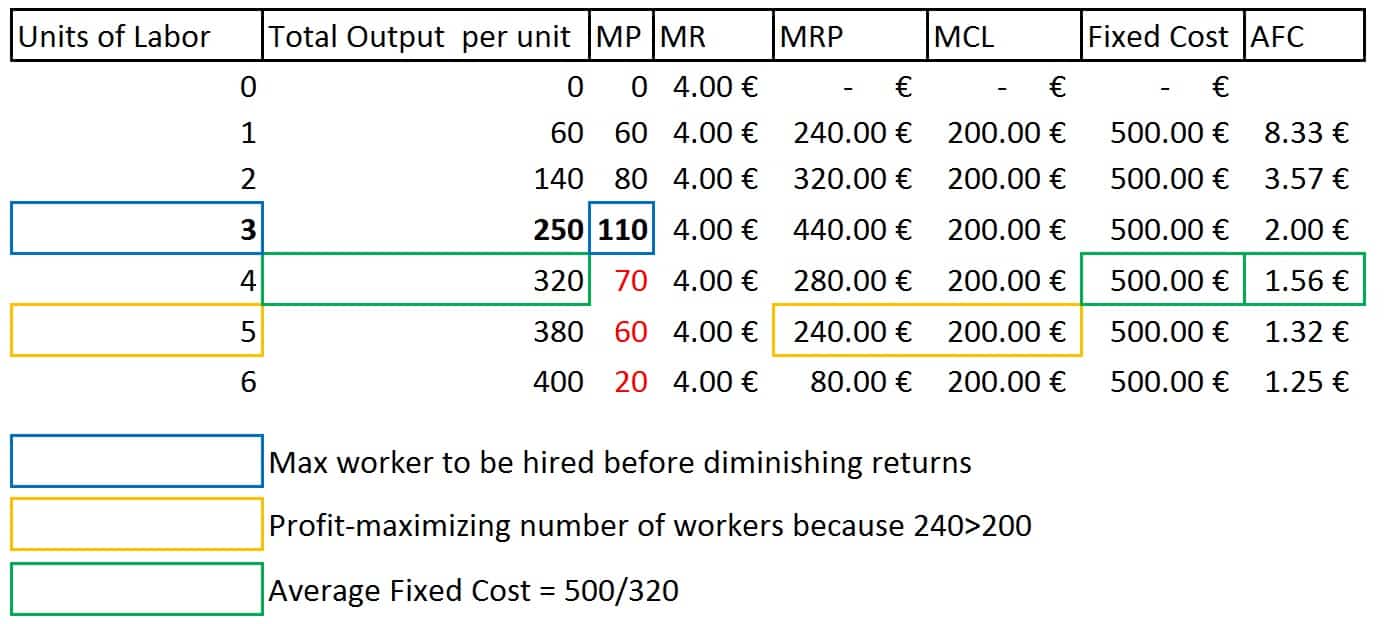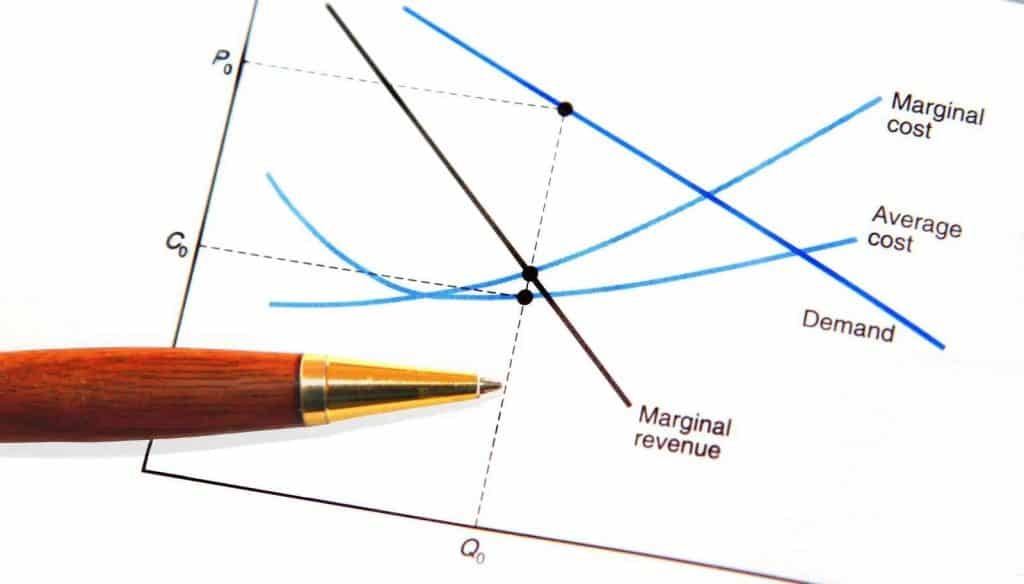What is the Marginal Revenue Product of Labor?
In Economics we study the impact, positive or negative, of employing one more unit of something so we can make better decisions. To illustrate this concept lets look at an example.
XYZ Company hires its workers in a perfectly competitive labor market and produces and sells coffee in a perfectly competitive product market. The market price for coffee is €4 per bag. The table below shows XYZ’s short-run production of coffee. Labor is the only variable input. XYZ’s fixed cost is €500.

Before diving in to the next section, everytime you have a question like this, make a table with the structure as above:
Units of Labor, Total Output per unit, Marginal Product, Marginal Revenue, Marginal Revenue of Product, Marginal Cost of Labor, Fixed Cost, Average Fixed Cost.
Note:
Marginal Product is the difference between Total Outpur per unit of that row minus the previous row: 60-0 = 60, 140-60 = 80, 250-140 = 110 and so on.
Marginal Revenue is the € amount per unit being sold: in this case a coffee bag for €4.00
Marginal Revenue Product (MRP) = MP x MR
Marginal cost of Labor (MCL) is the fixed wage per worker, a given number for these exercises. Same thing for Fixed Costs.
Average Fixed Cost Formula is Total Fixed Cost / Total Output per unit
With that done, the typical analysis envolves us asnwering the following questions:
1. When does XYZ starts experiencing diminishing returns?
Notice the blue box: with 3 units of labor, the company has 110 marginal units or product, but with 4 they have 70, so the company stops at 3 units of labor.
2. What is the average fixed cost for each hired worker?
Average Fixed Cost Formula is Total Fixed Cost / Total Output per unit. In this example i did it for 4 units of labor. You can do for all.
AFC4 = €500/320 = €1.56
3. Given a certain wage, what is the profit-maximizing number of workers to be hired?
To answer this question we look at MRP vs MCL. MRP need to be higher. In this specific case, the breaking point is at 5 units of labor where €240> €200
